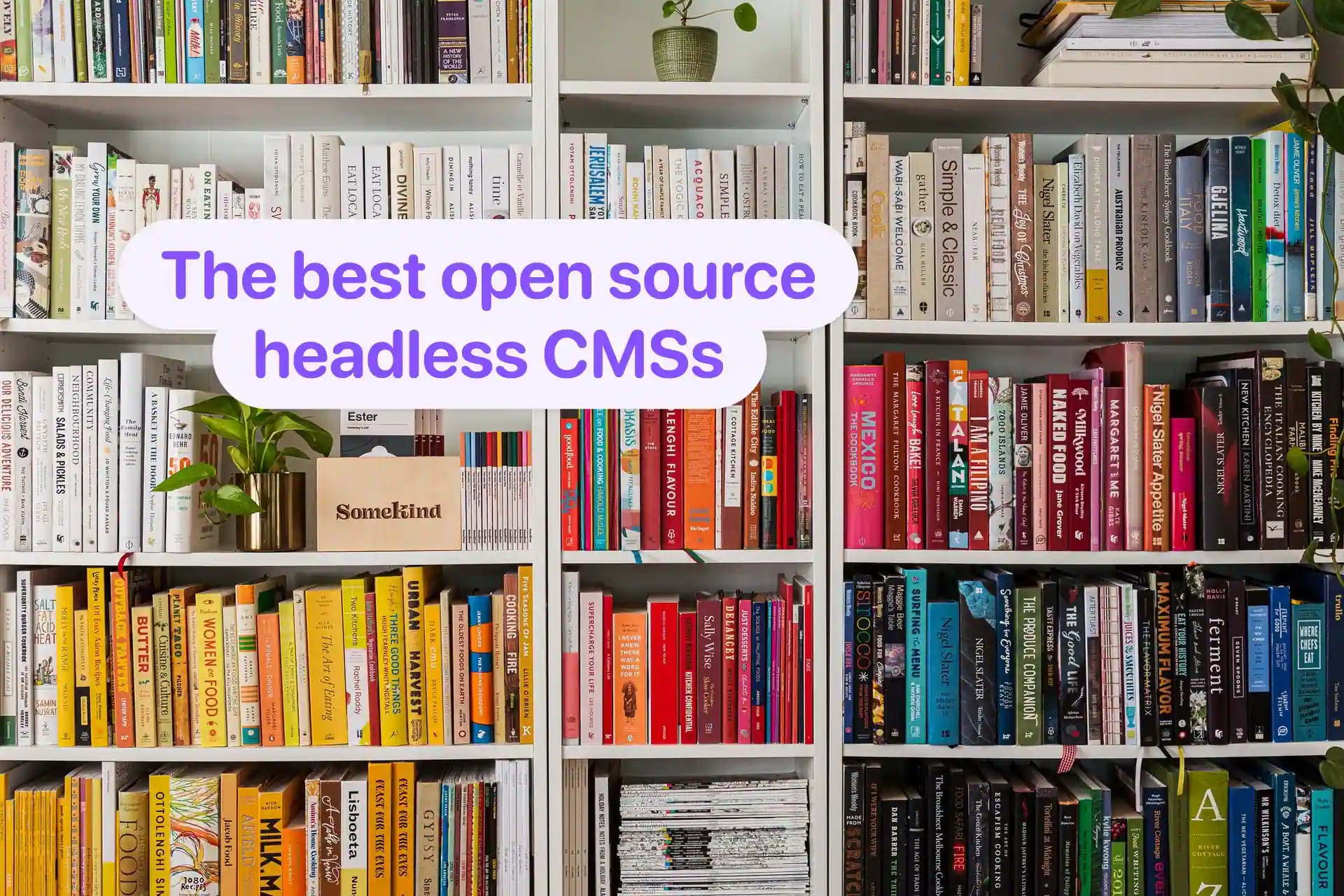Alternatives
The Best Open-Source Headless CMS’s
Power your web site or application content via these open-source content management systems
Tue 02 August 2022

What Is a Headless CMS?
A “headless“ CMS is a content management system that only handles the content data and exposes an application programming interface (API) to that content. It does not provide an interface for organizing site presentation and layout, leaving that to other tools more suited to that task. A headless CMS allows you to manage content in one place, integrating content into any system, software, mobile app, or website just by calling the APIs provided by the headless CMS.
Ready-made Solutions
There are many ready-made headless CMS tools available. They allow you to structure your data and host all your media such as photos and videos. Media management in particular can be painful if not done in an organized fashion.
Unfortunately, many of these tools are proprietary SaaS products that don’t offer much data portability, and perhaps more importantly, they can get really expensive… fast.
Tools like Contentful, Sanity, and DatoCMS appear to offer generous free plans, sure. But as soon as you have to scale or use your content for commercial purposes, the problems will start, as prices rise steeply from $0 to $90—$490/month.
We think this is a bit too much.
At this point you may ask, “Okay, Fortressa, but what else can I do?”
Open-Source Self-Hosted Solutions to the Rescue
Strapi
Open-source Node.js headless CMS to easily build customisable APIs.
Strapi is fully customizable and developer-first.
The interface offers endless possibilities for managing your data with a degree of flexibility usually only achievable by writing a ton of code. The development team appears to be very active and always offers lots of examples and troubleshooting. Over the years it has made great strides from its humble beginnings and has become a polished finished product.
One the other hand, with great power comes great responsibility: this tool could be complicated to manage in some respects.
Ghost
Turn your audience into a business. Publishing, memberships, subscriptions, and newsletters.
With Ghost, you can build a site in minutes and even manage a paid newsletter.
For the purposes of this article, we are only interested in Ghost’s ability to expose all its content via an API so it also becomes usable as a headless CMS.
The user experience is great, and performance is quick and responsive as well. Many people use Ghost to replace WordPress, and slowly Ghost is becoming a great solution for those who want to build a community.
Unfortunately, since its primary focus is elsewhere, Ghost does not offer advanced headless CMS features, but perhaps its content API functionality could be enough for some folks’ needs.
Directus
Instant REST + GraphQL API and intuitive no-code data collaboration app for any SQL database.
Directus is like Strapi but also has other interesting features such as detailed analytics (“Insight”) and workflow automation (“Flows”). In short, from a non-technical user’s point of view, it offers a lot of functionality without having to code these functions yourself.
So if you don’t have a team of developers on deck but want a powerful general-purpose tool, Directus might be for you.
Keystone
The most powerful headless CMS for Node.js — built with GraphQL and React.
Designed to be used by developers, it offers many tools to create sites, applications, and even e-commerce projects. This is also very powerful, but if you do not have a developer available, you might want to focus on some of the other entries in this list.
On the other hand, if you have development resources available, you could build very interesting and complex projects in no time.
WordPress
We have all stumbled upon WordPress at least once in our life. We may love or hate it, but it is undoubtedly one of the most common applications on the Internet and is used by millions of people every day.
Having tons of WordPress plugins can make your life easier — or more complicated if something goes wrong — and therefore WordPress offers a lot of flexibility.
WordPress is in this list because of the very large community, but to use it as a headless CMS, there is additional work to be done, such as installing third-party plugins that provide that specialized functionality.
In Conclusion
While some of these tools are available as managed hosted services, if you would like to see a particular open-source headless CMS available on Fortressa, please reach out and let us know!


